Known as the premier populist fall film festival, the Toronto International Film Festival (TIFF) is home to a yearly assortment of the best and biggest films of the season. Large crowd-pleasers like Netflix’s Glass Onion: A Knives Out Mystery, Oscar contenders like Steven Spielberg’s The Fabelmans, and more arrive to premiere and build buzz leading up to their releases. However, this year, the hottest name at the festival is not one typically associated with the filmmaking scene.
Bringing along her musical short film All Too Well, Taylor Swift arrived at the festival (alongside Stranger Things star Sadie Sink) for a special 35mm screening and conversation with TIFF CEO Cameron Bailey. With Digital Trends attending the event in full, here’s our complete recap of TIFF’s In Conversation with Taylor Swift.
Early movie aspirations (and inspirations)
After the film’s screening ends with much applause, Swift commences the conversation by delving into the shift in her creative process from pop icon to short film director and the motivation behind that shift. A highly successful musical artist who released her first album at 16, Swift recounts that even from the conceptualization stage of her music, she would “immediately start thinking” about visual components for her shows and music videos.
Early in her career, she would reach out to directors and, after telling them her rough idea, would leave the rest of the creative process to them. Yet she soon found that “the more responsibility [she] took on creatively, the happier [she] was.”
Despite never going to film school, she credits her spark of wanting to be a director to her time on music video sets. Constantly asked her thoughts on the costumes, lighting, shots, and more, she began interrogating the “why” behind her personal preferences. Soon jumping to writing treatments for her videos, she slowly became more and more creatively involved until she co-directed her first video.
She considers that jump her film school, as she learned to write in-depth treatments, shot-listing, and more before directing her first solo music video, The Man (working with director of photography Rodrigo Prieto, Martin Scorsese’s go-to collaborator whose work will next be seen in Greta Gerwig’s Barbie). After building on her talents with the music videos for Cardigan and then Willow, she decided to take on a new challenge: directing her first short film.
Throughout the conversation, Swift showcases a wealth of cinematic knowledge that leaves the room full of press and industry members impressed. Before delving into discussing the production process for All Too Well, she touches upon her cinematic influences through the different creative eras that have marked every one of her album releases.
During the creation of her album 1989, for instance, she’d find herself watching John Hughes movies like Sixteen Candles and The Breakfast Club “over and over.” Yet, when the pandemic hit, Swift immersed herself further into the world of cinema. Calling Guillermo Del Toro’s The Shape of Water one of her “favorite films ever,” she dove into the rest of Del Toro’s work, watching Devil’s Backbone and Pan’s Labyrinth back-to-back as her “whole world turned into folk tales, forests, and mythical creatures.”
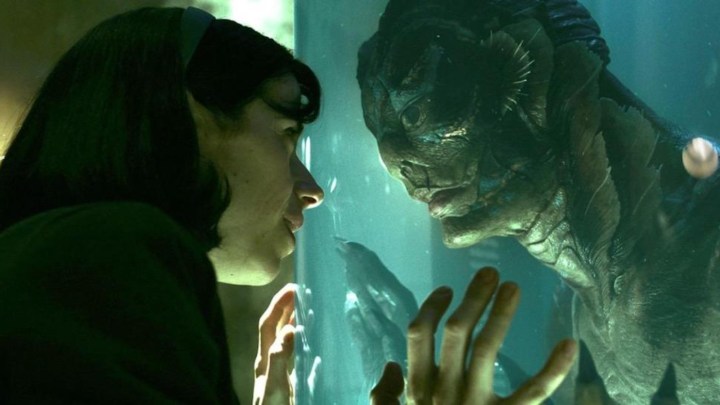
Also watching Alfred Hitchcock’s Rear Window and being taken by its “voyeuristic” perspective, Swift “experienced combining some of those cinematic inspirations and films that [she] loved” to “end up with an album that is [her] telling stories from other people’s perspectives in a folk tale.” She cites her three “cinematic culprits” for her recent inspirations: Del Toro, Hughes, and Hitchcock (while also mentioning Ang Lee and Sense and Sensibility, his 1995 film starring Emma Thompson and Kate Winslet, as a recent favorite).
Swift doesn’t stop name-dropping there. After touching upon drawing references from films in music videos like The Man (which drew heavily from Scorsese’s The Wolf of Wall Street, a film Swift “loves” and “absolutely [adores] so much”), she focuses on her cinematic inspirations for All Too Well. The short comes from her obsession with a “period of time in the 1970s, where you started seeing these romantic films where two characters are so beautifully, intimately woven together and then they just unravel […] right in front of you, and you just can’t believe it.”
Citing projects such as The Way We Were, Love Story, and Kramer vs. Kramer alongside modern counterparts like Marriage Story (which left her upset “for months”) and even A24’s The Souvenir and The Souvenir: Part II, she mentions being drawn to works that “punch her in the stomach” while still “hitting those emotional touchstones.” When it comes to a specific director, she raves about the works of John Cassavetes. “I love how he allows despair and human emotion to just breathe and play out,” she says of the acclaimed independent filmmaker. “You see the loose ends, you feel like you’re really in that house with that fight going on, and it’s just harrowing.” This was the feeling she sought to recapture in All Too Well.
The making of All Too Well
With a wealth of music videos under her belt, what led Swift to choose this track as the basis for her first short film? “The reason I wanted to make a short film and not a music video for this song,” she says, “is because I’ve been fascinated with the dynamic of the age of the character that Sadie [Sink] is playing and what a precarious age that is.” She says it’s an age where “you could fit back at your family home, but you sort of don’t. You could fit in an adult’s cultivated apartment, […] but you kind of don’t. You [could] fit everywhere, but you fit nowhere, and I think that plays into a little bit of where she’s coming from.”
For All Too Well, one of her first major creative decisions was to shoot it with a 1.33 aspect ratio and on 35mm film, a rarity for musical artists. These bold creative choices were the product of a “beautifully collaborative process” with “people [she] trusts.” After bringing on director of photography Rina Yang early in the process, she showed Yang her “endless mood boards, references and what I was looking for in terms of lighting, color, and texture.” Soon, “it was pretty apparent that we both wanted to shoot on 35 millimeter.”
Even though Swift didn’t know how to tackle that approach, Yang did. After recommending “shooting interiors on Vision3 500T stock and exteriors on Ektachrome” (the same brand of film recently used on productions like Euphoria and Best Picture winner Argo), Swift took her advice and began seeking out the rest of her collaborative team to bring the short to life.
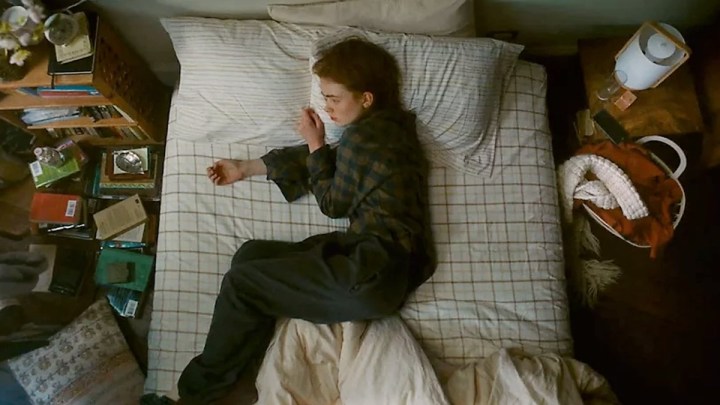
Because the short film’s limited length didn’t give them much time to explore the two characters’ identities to a deeper extent, Swift, Yang, and production designer Ethan Tobman made “technical, subtle decisions” for the lighting and set design to flesh their identities out in a more subdued way. Swift says that a prime example of this is seen in the apartments of Sink’s and Dylan O’Brien’s characters.
Taking inspiration from how the apartment of Barbra Streisand’s character in The Way We Were shows “who she is,” Swift wanted Sink’s apartment to “be her” and “look like who she is,” in contrast to O’Brien’s “minimalist, mature, sophisticated, and dark” space, to show their true selves through the set design. “Sometimes audiences pick that up consciously,” she says, but when “they’re absorbing it, [ and] don’t even know that they understand more about the character by watching their environment, that’s the dream.”
When it came to the rest of the technical direction, two significant points Swift focused on were the lighting and capturing an atmosphere driven by naturalism. Swift says, “she wanted this short film to feel like autumn … not the entire time you’re watching it, but in your memory.” For the blissful, honeymoon-like moments of falling in love, she pushed for warmer tones, while periods of “despair and reeling” were marked by cooler tones.
Regarding capturing her authentic vision while still maintaining a sense of naturalism, Swift assures that she isn’t like certain directors who want a specific “kind of precision.” “You have this vision in your head [where] you know what you’re going for in terms of the effect, but how much do you direct the detail of your actor’s performances? With this one, it was really about naturalism, so we’re not trying to get a perfectly symmetrical shot.”

She goes on to clarify that while she “loves Wes Anderson,” they “were going for more of that heart-throbbing naturalism within those moments […] where you know they’re falling in love, and there’s chemistry.” While she extensively planned most of the shoot, she “wanted to have this sort of collage kaleidoscope of memories at the end” that she could find in the edit to heighten the emotional impact of the film.
Casting Sadie Sink and Dylan O’Brien
When casting her project, Swift had her mind set on two names from the start: Stranger Things star Sadie Sink (also seen at TIFF co-starring alongside Brendan Fraser in Darren Aronofsky’s The Whale) and Teen Wolf alum Dylan O’Brien. “It was what my heart needed,” Swift says. “I had never seen either one of them play roles like this before, [but] I’d seen them ace anything that was put in front of them. I thought, ‘I wonder if Sadie Sink wants to play a romantic lead?’ I knew I hadn’t seen it yet, but she’s at that perfect point in her career where she could absolutely […] eat this up.”
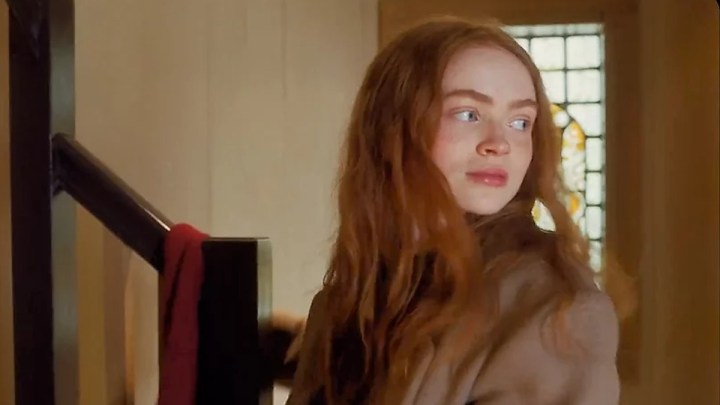
How crucial was Sink to her creative process? “When I was writing it, I was writing Sadie. I wasn’t writing thinking of any other actress or a generic, beautiful, wide-eyed young person. I was writing it for Sadie, and if she would have said no, I don’t know if I would have made the film.” For O’Brien, what drew Swift to him was his deceitful charisma: “He’s got this dangerous charm. He’s not dangerous, but he’s dangerously charming, and that is just a power that he has.”
She took a big swing to win them over, bypassing their management teams and reaching out to both of them over the phone. “I texted Dylan the longest text you’ve ever seen. When I read it back, I was like, ‘that was too much.” For Sink, it was a “long, long text, and then a call.” What was in those texts? Swift admits she “wasn’t trying to be cool at all.” “I was just like ‘Please, please, please, please, I promise no one will work harder to make this good than me.'” She pauses for a second. “I don’t know if I went that far, but they were amazing. They didn’t need to be convinced in a way that I was able to pick up on.”
Did Swift have any other actors in mind? “I didn’t have a backup plan, and I was just so happy that they trusted and believed in me [as] a first-time short film director.” She then says candidly, “I just couldn’t believe that they wanted to do it. I still can’t believe that anybody wanted to do this with me. I’m so happy about it!”
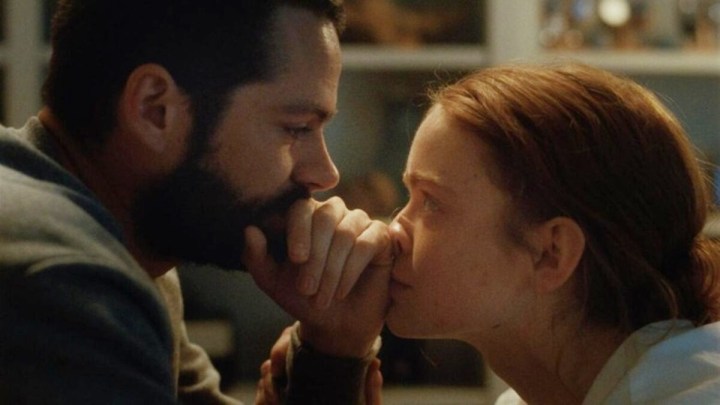
She didn’t screen test or rehearse with them together before casting them, but she knew it would work out with proper preparation. In fact, she discussed scenes with the actors so much that certain scenes ended up being “oners.” To Swift, knowing how to improvise and tap into the moment was essential, especially for the pivotal, music-less fight scene. “I think you can tell a lot about people based on how they fight or argue.
When it came time to shoot the fight, we had scripted it out, but I had talked to Dylan and Sadie so much about what their intentions were and who and what exactly it was that was the catalyst for this fight. I was dealing with such emotionally intelligent actors that when we shot it, about 92% of that scene was improvised.” The move pays off, with the scene standing tall as a revelation of her directorial talents, gracefully channeling the spirit of Cassavetes through her spellbinding direction.
Taylor Swift … film director?
When asked about her future in film and how she’d weave her cinematic ventures into her ongoing music career, Swift responds with the candor of a confident but thankful artist striving to prove herself as a multidisciplinary talent: “I have a lot of bandwidth to put into creative [endeavors]. I am so lucky to be supported by kind, generous, nice, thoughtful people who seem to care about the things I make. I keep working hard, trying my best, and I would absolutely love to expand in terms of filmmaking and storytelling. It’s a natural extension of my writing.”
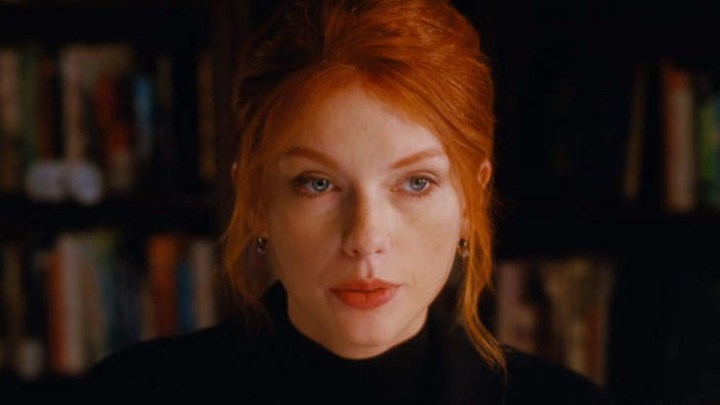
What’s next for her as a director? “I think I will always want to tell human stories about human emotion. I can’t imagine myself filming an action sequence. I could see [myself] going in a more comedic irreverent place. The next step would be committing to making a [feature] film, and I feel like I would love for the right opportunity to arise because I absolutely adore telling stories this way […] if it were the right thing, it would be such a privilege and honor.”
Swift takes time to acknowledge the privilege her position of fame in the music industry has given her in her smooth move into the film industry, especially when compared to other female filmmakers: “I’m in an incredibly privileged place to have gotten to finance this short film independently because when we talk about female filmmakers, I am one of them, but there are people who are working so hard to get financing and to get any type of budget together to make the projects they want to make. I honestly bow down and tip my hat to those female filmmakers.”
The progress the industry has made in recent years, though, is admirable, according to Swift. “It’s really beautiful that we’re in a place where the idea of a female filmmaker doesn’t make you roll your eyes or think as skeptically as it once was, and we have so many incredible female filmmakers to thank for that.”
She mentions Greta Gerwig, Eternals director Chloe Zhao, Nora Ephron, and Lena Dunham (a “good friend” who is “always there if she has a question”) as female filmmakers who inspire her. With her astounding depth of cinematic knowledge and grand artistic ambition, one should not be surprised if Swift soon finds herself listed alongside those names in the eyes of young female filmmakers across the globe.
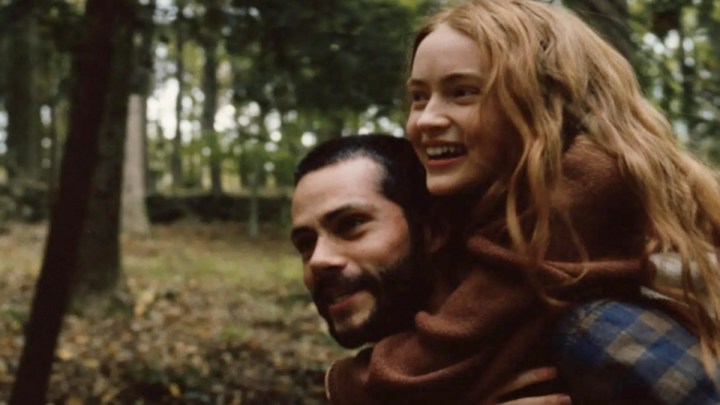
The fact that All Too Well is the piece that is launching Swift’s film career is a miracle in itself. “It was [always] a song that I loved so much, but it was never chosen by the team in a conference room as being a single. Nobody saw the potential in it except for the fans who loved it so much that they made it their favorite song on that album. The song was tough because it was very current for me. There would be no world in which I could have made a visual element to that song at that point in time. I needed 10 years of retrospect in order to know what I would even make to tell a version of that story visually, and I’m so grateful that I was able to do that with some crazy stroke of all these different twists of fate.”
Although she started her career in music, through film, Taylor Swift has found something greater. “As a storyteller, you’re just sitting there thinking it is the most brilliant thing when that many people can come together to collaborate. When I’m making music, it’s usually either me writing on my own, or I’m in a studio with one other person. That feels collaborative and fun, but when you are on a film set, sometimes you just catch yourself looking over at the camera operator, or the first AD, or someone hanging a light in the perfect exact spot, and you cannot believe how talented and so specialized and brilliant these people are. We’re all working together, and when you have it culminate in what [we] did during this short film, it feels like a big group hug.”




